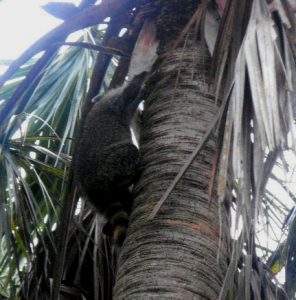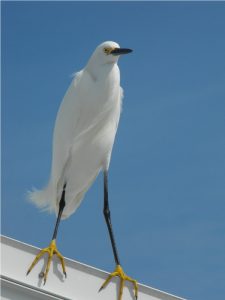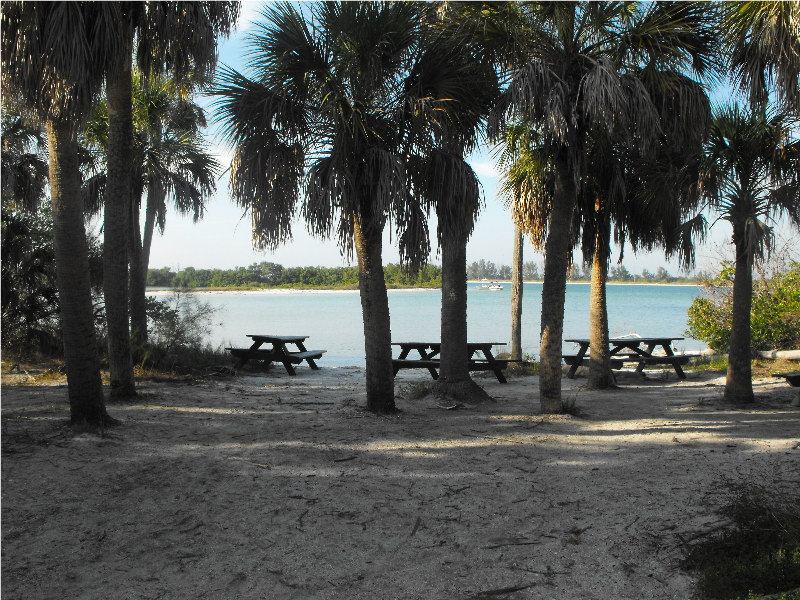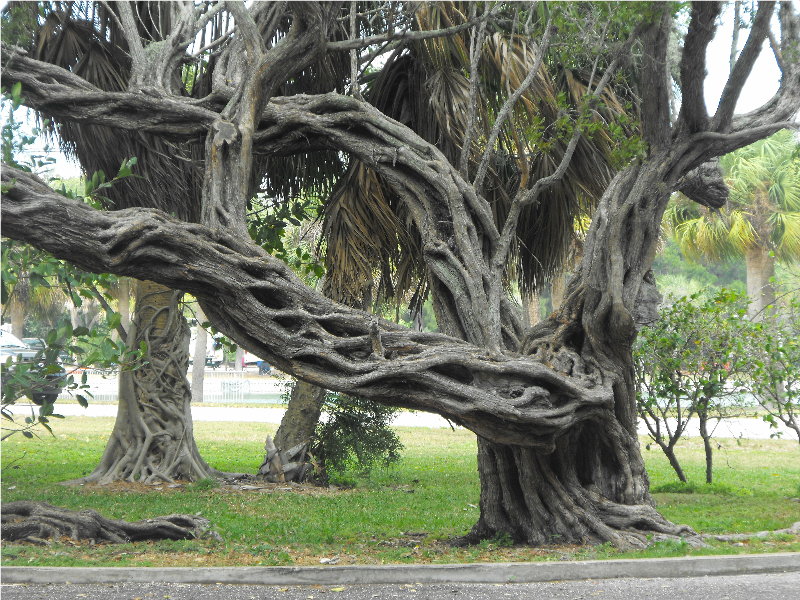Coeur d’Alene, Idaho, USA (June 2012) Near this tree on the banks of Lake Coeur d’Alene is a commemorative sign telling of the Native Americans who once gathered on the shores of the beautiful lake in northern Idaho. After the Europeans came to America and made their way westward,

 On the shores of Lake Coeur d’Alene
On the shores of Lake Coeur d’Alene
and the great railroads were built, Couer d’Alene took its spot among the beautiful hideaways of the west. Easily accessible from the Spokane, Washington airport via I-90, Couer d’Alene presents a marked contrast with the sprawling and industrial Spokane. The centerpiece remains the lake with its clear water surrounded by the green hills, but the town of Coeur d’Alene has done a lot to make the visitor welcome.
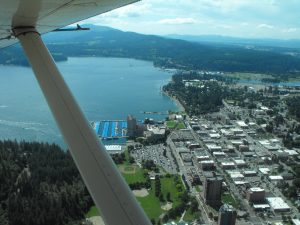
The visitors have come and some with star quality names have built homes in the area that we will only read about or fly over and look down on their pools and tennis courts and guest houses.
Along the lake the town proper is a mixture of shops and homes, where walking into the shops gave the impression that the shopkeeper was genuinely pleased to have you in the store, rather than the department store “I just work here” stare. Walking to get about was clearly no problem and a pleasant hike around Tubbs Park will relieve the stress and provide you with some spectacular views of the lake. We will return to Coeur d’Alene for its beauty and charm, and will come back to take our road bikes on the nearby Trail of Coeur d’Alenes rails to trails project nearly spans the Idaho panhandle. But, on this trip we were not brought to the town by any of these.
This trip we came to Coeur d’Alene for the Ironman Triathalon. An Ironman Triathlon is not for everyone. In fact it is only for the fittest of the fit. Ironman competition began in Hawaii more than 25 years ago when several highly fit military men came up with their ultimate test based on swimming, cycling and running events in which they had participated. The challenge they set for themselves was an open water swim covering 2.4 miles, a bicycle ride of 112 miles, and a marathon run, all in one day. From a handful of participants on that day the Ironman has grown into a world wide franchise, with thousands of participants testing themselves in Ironman sponsored events all over the world. We have an Ironman finisher in our family, so we came to watch him participate, see Coeur d’Alene for the first time, and take a side trip to Banff.
The first leg of the contest is the swim. The men and women in their wetsuits lined up along the beach shown in the photo below to dash into the 57 degree F. water where they would swim away from shore 0.6 miles, parallel the shore 0.2 miles, and back to shore where they would re-enter the water and do it again!
The start is awesome. You might see 25 or 30 professionals start half an hour before the age classified amateur participants and it is inspiring to see the pro’s go at it, but the big rush is when the 2500 hit the water at the same time!
Although it is a difficult spectator sport, as you can see thousands of supporters for the athletes were en masse near the beach and along the seawall yelling and urging their favorite participant on. The water sorts the athletes out by their ability, with swimmers straining stroke after stroke to finish the 2.4 miles before the two and one half hour time limit expires. Then, they run across the sand to the the transition area where they are helped out of their wetsuits, into warming rooms if they need them, and onto their bicycles. Some are unable to continue beyond the swim.
The bike ride is 112 miles. For this part of the race, a lane of US 95 heading south from Coeur d’Alene and major streets in town were closed to trafffic. It is along the streets that you will get the best views of the cyclists.
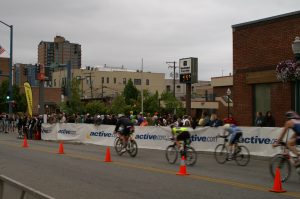
Although, the bike ride is also two laps, the laps go so far out of town that each athlete is out of sight for hours, so for a spectator there is plenty of time to grab a bite to eat, see the sights, and get ready for the next time your athlete speeds by. Some say the smart ones take a nap. We chose to walk around the world’s largest floating boardwalk adjacent the Coeur d’Alene Resort. The boardwalk is 3300 feet long and surrounds the marina. If you look at the boats tied up in the Marina, you’ll understand that quite a bit of money is spent on the enjoyment of Lake Coeur d’Alene.
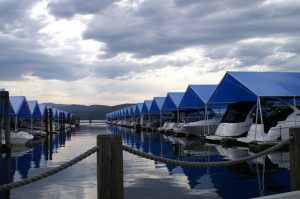

We also took in some of the shops and a couple of miles of trails in Tubbs park before it was time for the marathon part of the competition.
The marathon is grueling. Even the fastest finisher has to run part of his marathon in the heat of the day. 26 + miles in two laps through the city streets of Coeur d’Alene. Although we cheered the athletes on, there is no team in this sport. Each athlete is on his own, testing his or her own willpower to put one foot in front of another.

Now they are faced with the final deadline: Be across the finish line by midnight or you are not deemed to have finished the race at all. For some, what started filled with adrenalin at 7:30 in the morning will end in anguish after midnight. But for most, they will hear the crowd cheer and give high-fives as they near the finish line.

The finishers are checked by medical personnel, wrapped in thermal reflectors to keep their bodies warm as walk around with family and friends or head to their bed. Many come back to near the finish line or sit where they can hear the music playing and hear the announcer give voice to the name of each finisher. Deep into the night the music plays and the names are called out. Then, at midnight, the music stops, no more names are called, and the crowd leaves. What seemed forever to train for and watch is suddenly over, but the Ironman finisher has a memory and medal that should last a lifetime.
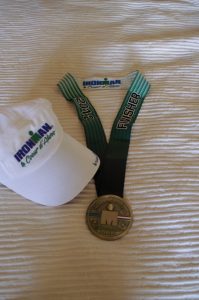



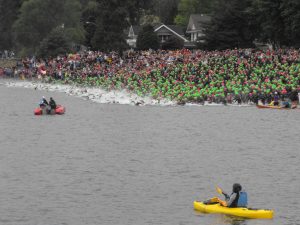 Coeur d’Alene swim start
Coeur d’Alene swim start








